
Lorenzo di Pietro, known as Vecchietta, was an Italian Sienese School painter, sculptor, goldsmith, and architect of the Renaissance. He is among the artists profiled in Vasari's Le Vite delle più eccellenti pittori, scultori, ed architettori.
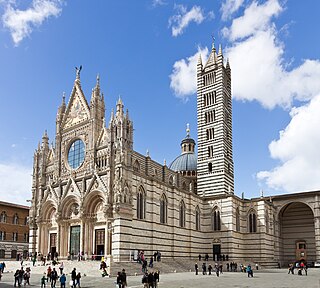
Siena Cathedral is a medieval church in Siena, Italy, dedicated from its earliest days as a Roman Catholic Marian church, and now dedicated to the Assumption of Mary.
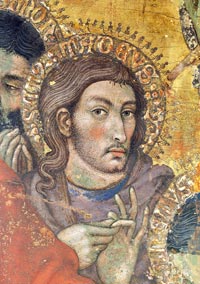
Taddeo di Bartolo, also known as Taddeo Bartoli, was an Italian painter of the Sienese School during the early Renaissance. His biography appears in the Vite of Giorgio Vasari, who claims that Taddeo was the uncle of Domenico di Bartolo.

Massa Marittima is a town and comune of the province of Grosseto, southern Tuscany, Italy, 49 km NNW of Grosseto.

San Raimondo, also called San Raimondo al Refugio, is a Baroque style, Roman Catholic church located on the intersection of Via del Refugio and Via di Fiera Vecchia, in the Terzo of Camollia of the city of Siena, region of Tuscany, Italy. The church is dedicated to St Raymond of Pennafort.
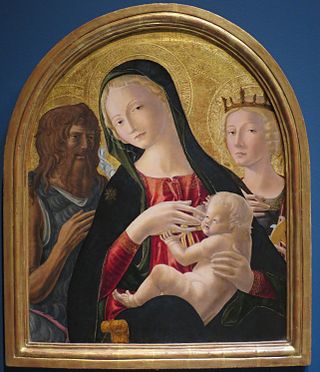
Neroccio di Bartolomeo de' Landi (1447–1500) was an Italian painter and sculptor of the early-Renaissance or Quattrocento period in Siena.

The Basilica of San Domenico, also known as Basilica Cateriniana, is a basilica church in Siena, Tuscany, Italy, one of the most important in the city. The basilica is an example of Cistercian Gothic style.
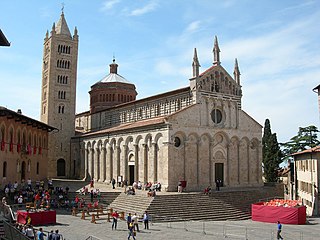
Massa Marittima Cathedral is a Roman Catholic cathedral in Massa Marittima, Tuscany, Italy, dedicated to Saint Cerbonius. Formerly the episcopal seat of the Diocese of Massa Marittima, it is now that of the Diocese of Massa Marittima-Piombino.

The Abbey of Monte Oliveto Maggiore is a large Benedictine monastery in the Italian region of Tuscany, 10 km south of Asciano. Its buildings, which are mostly of red brick, are conspicuous against the grey clayey and sandy soil—the Crete senesi which give this area of Tuscany its name.

The Piccolomini Altarpiece is an architectural and sculptural altarpiece in the left-nave of Siena Cathedral, commissioned by cardinal Francesco Todeschini Piccolomini who expected it to become his tomb. However, he was elected Pope Pius III and buried in the Vatican. It was built between 1481 and 1485 by Andrea Bregno in Carrara marble, with additions in the following decades – these included four niche sculptures produced between 1501 and 1504 by Michelangelo of saints Peter, Augustine, Paul and Gregory. On top of the altar is the Madonna and Child, a sculpture (probably) by Jacopo della Quercia. The central painting of the Madonna is by Paolo di Giovanni Fei and from the late 14th century.

Volterra Cathedral is a Roman Catholic cathedral in Volterra, Italy, dedicated to the Assumption of the Virgin Mary. It is the seat of the bishop of Volterra.
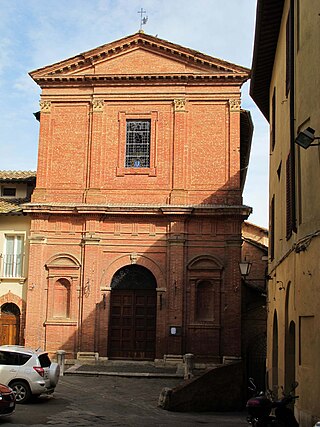
San Giovannino della Staffa, also known as San Giovannino in Pantaneto is a Renaissance style Roman Catholic church on Piazetta Virgilio Grassi, in the Contrada del Leocorno, Siena, Tuscany, Italy.
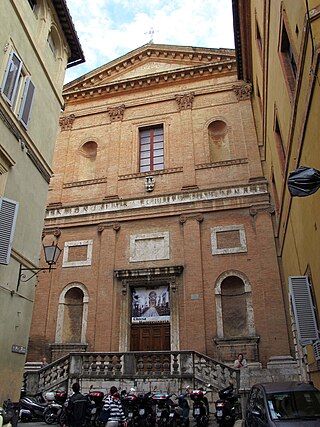
San Vigilio is a Renaissance and Baroque style, Roman Catholic church located on Via San Vigilio, Siena, region of Tuscany, Italy. The exterior has a sober classical facade, while the interior has rich Baroque decorations. The church is dedicated to the Bishop and martyr St Vigilius; it now serves as the chapel for the University of Siena. It stands across the street from the Castellare Ugurgieri, and down the street from the Palazzo Bandini Piccolomini found on the junction with Via Sallustio Bandini.
Flaminio del Turco was an Italian architect and sculptor. He was born and active mainly in Siena, Italy. Along with Damiano Schifardini, he helped erect the Collegiata di Provenzano. He also helped the design the church of Santa Lucia, Montepulciano. He completed some altars for the Sienese churches of San Raimondo and San Giovannino della Staffa.

The Collegiata di San Martino is a Renaissance-style, Roman Catholic collegiate church in the center of Sinalunga, province of Siena, region of Tuscany, Italy. It is now part of the Diocese of Montepulciano-Chiusi-Pienza.
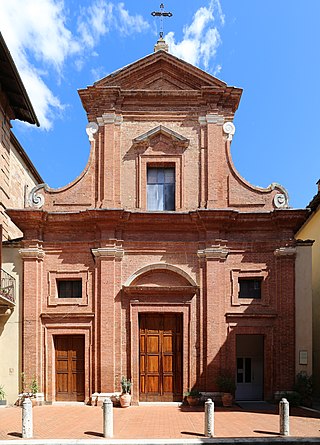
Santi Pietro e Paolo is a Baroque-style, Roman Catholic parish church located in the center of the town of Buonconvento, region of Tuscany, Italy.

Santi Stefano e Niccolao or Stefano e Nicolò is a Roman Catholic church located in Pescia, region of Tuscany, Italy.

The Museo d'Arte Sacra della Val d'Arbia is a small museum of religious art in Buonconvento, in the Val d'Arbia to the south of Siena, in Tuscany in central Italy. It contain a number of paintings by important artists of the Sienese School, among them Duccio di Buoninsegna, Sano di Pietro and Pietro Lorenzetti. The museum is housed in the Palazzo Ricci Socini, close to the parish church of Santi Pietro e Paolo.

The Republic of Massa was a small Italian state located in Central Italy that existed from 1225 to 1336. It was founded in today's city of Massa Marittima and expanded to cover an area corresponding to the current upper Maremma.

The Oratory of the Compagnia di San Bernardino is a place of worship in the Piazza San Francesco in Siena. Elevated to minor basilica status in 1925 by Pope Pius XI, it adjoins rooms housing the diocesan museum. It is notable for its frescoes from various 16th- and 17th-century Sienese painters like Sodoma and Domenico Beccafumi. The oratory is almost adjacent to the Basilica of San Francesco, Siena.






















